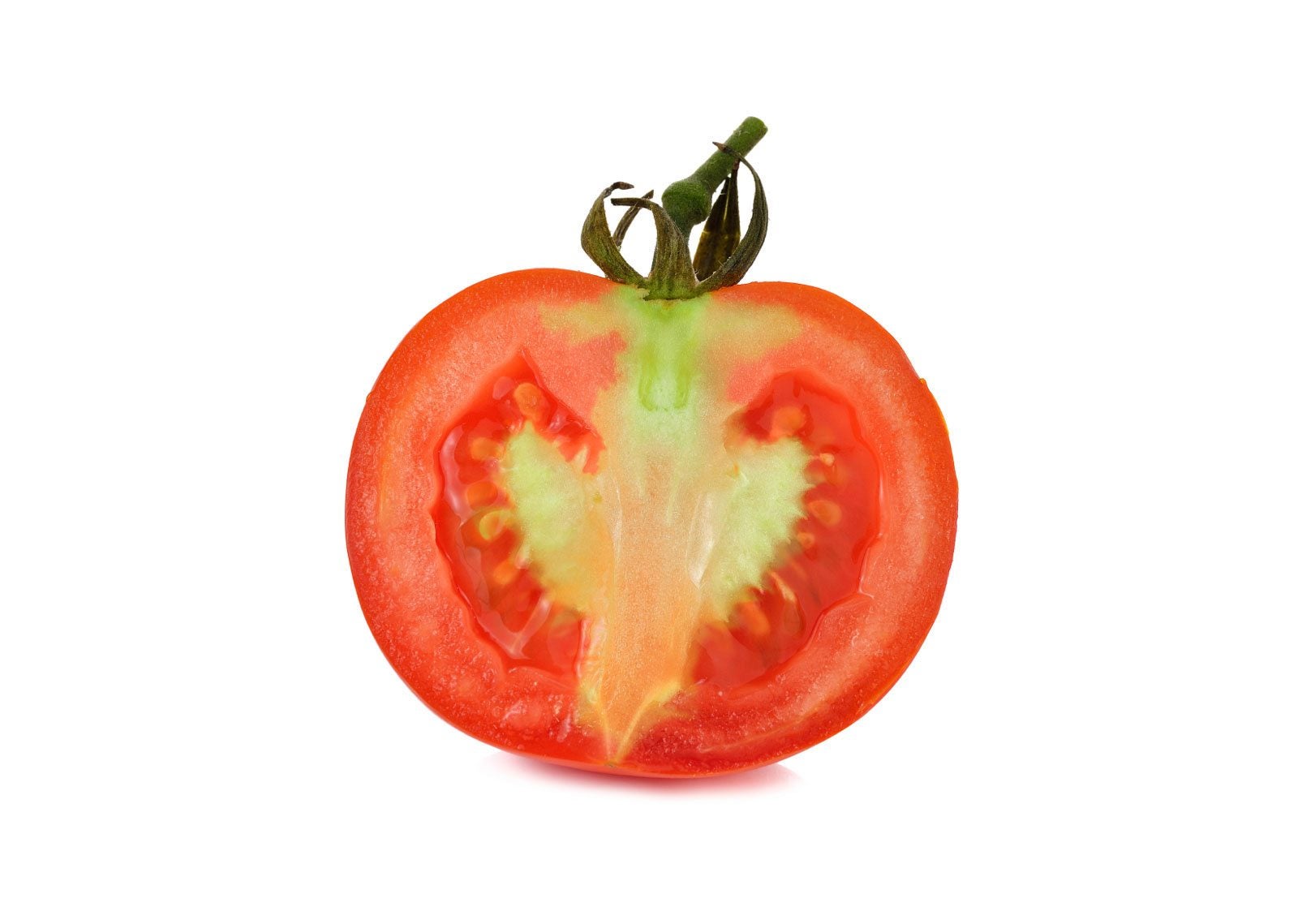Why Red Tomatoes Are Green Inside

If you are a grower of tomatoes (and what self-respecting gardener isn’t?), you know that there are any number of issues that can plague this fruit. Some of these we can combat and some are up to the winds of fate. One such oddity is when red tomatoes are green inside. Why are some tomatoes green inside? And if the tomatoes are green inside, are they bad? Read on to learn more.
Why are Some Tomatoes Green Inside?
Most tomatoes ripen from the inside out, hence the tomato seeds are green because they contain chlorophyll, the pigment in plants which gives them a green hue. Chlorophyll allows plants to absorb energy from light in a process called photosynthesis. As the seeds mature, the outer layer hardens to protect the interior embryo. The seeds also turn beige or off white color when they are ripe. So, a green interior may be green seeds. In other words, the tomato may not be ripe yet. This is the simplest explanation when a tomato is red but green inside; the tomato isn't ripe inside. Another reason for red tomatoes that are green inside may be stress, which can be attributed to many things or a combination. Long periods of dry spells, especially when followed by heavy rain or excessive heat over an extended period of time, can greatly affect tomato production and maturation. In these cases, the nutrition the plant needs isn’t properly getting transferred within the plant. The end result may be a tough, green to greenish-white inner core with pale fruit walls and green seeds and cavities. While Mother Nature’s whims are out of your control, you can do some things to thwart her caprices. Mulch heavily to maintain adequate moisture during dry spells. Be sure to use a well-draining soil in case of the reverse – heavy rains. Use a soaker hose or drip line irrigation system equipped with a timer to ensure even watering in a timely manner.
Other Reasons a Tomato is Red but Green Inside
Defoliation, under or over fertilization, and insect pests may all cause green interiors in tomatoes. Potassium deficiencies lead to a disorder called blotchy ripening. Usually this shows itself as areas on the outside and inside of the fruit that aren’t ripening. Sweet potato whiteflies and silver leaf whiteflies introduce a toxin into the fruit which prevents proper ripening, although this is usually characterized by yellow or white skin as well as the above, and severe white blotching on the interior. Lastly, you might want to change varieties. The scuttlebutt is that this problem is more common in old tomato varieties and that the newer hybrids have this issue bred out of them. The best bet is to prepare for next year by covering all the bases. Capture whiteflies with sticky traps, fertilize regularly, and use a drip line and well-drained soil. After that, hope for the best with the weather. Oh, and as to the question if tomatoes are green inside, are they bad? Probably not. They may not taste very good, probably because the tomato is not ripe inside. In all likelihood they are pretty tart. Try to let the fruit ripen a bit longer on the countertop. Otherwise, you could use them like green tomatoes, fried. Or you can dehydrate them. We did green dried tomatoes last year and they were delicious!
Gardening tips, videos, info and more delivered right to your inbox!
Sign up for the Gardening Know How newsletter today and receive a free copy of our e-book "How to Grow Delicious Tomatoes".

Amy Grant has been gardening for 30 years and writing for 15. A professional chef and caterer, Amy's area of expertise is culinary gardening.
-
 Zinnias On Repeat: 10 Glorious Cut-And-Come-Again Varieties For Endless Summer Bouquets
Zinnias On Repeat: 10 Glorious Cut-And-Come-Again Varieties For Endless Summer BouquetsThese zinnia varieties keep giving all summer, making them the perfect choice for dedicated cutting gardens – or just the occasional homegrown bouquet.
By Ellen Wells
-
 Create A Romantic Garden Straight Out Of Bridgerton: Regency Era Romance In Your Garden
Create A Romantic Garden Straight Out Of Bridgerton: Regency Era Romance In Your GardenTry some romantic garden ideas straight out of Bridgerton. Flowers and gardens in the Regency era were lush and charming and you can get the same look!
By Bonnie L. Grant